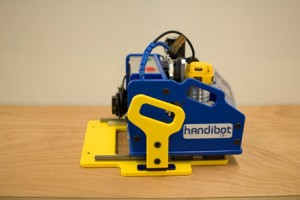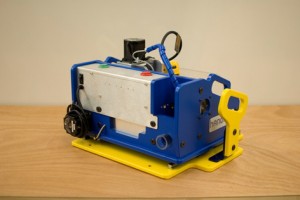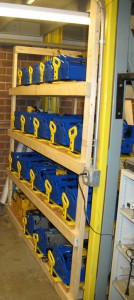Latest updates!
by Michael Berliner • September 30, 2013 • News
Hello Handibot fans,
We’ve been working hard to implement design improvements that were conceived during testing of preproduction tools both by outside beta testers and by us in-house. We are quite happy with the results and think you will be too! We’ll share with you below some of the many updates and improvements we’ve made to Handibot smart power tools since the close of the Kickstarter campaign.
The first batch of Handibot tools that will go out to Handibot Inner Circle, Handibot & Workshop, Handibot Early Adopter, and Handibot Earlybird backers is well into production and await final assembly and testing. A small batch of handibots has already been delivered to our earliest backers and more are on the way. We have dealt with late arrival of our motors which has held up final assembly for many tools in this first batch. In the final analysis, we are approximately 2 weeks behind schedule for our a portion of our September deliveries. We aren’t happy about being behind schedule but our highest priority, getting quality tools into your hands, won’t be compromised.
Here’s what we have been up to:
We’ve relocated and better sealed the electronics
Perhaps the most visually striking change is our new electronics enclosure. Our preproduction units had electronics located inside the exoframe. While we were pleased with the merits of this layout, our testing led us to the conclusion that we wouldn’t be able to adequately seal the electronics from dust intrusion and shed heat from this area effectively. For this reason the electronics have been moved to the rear of the exoframe, out of the line of fire of dust, and are enclosed in an aluminum casing; helpful in shedding heat from the drivers. Our new enclosure allows us to use larger, “arcade-style” buttons for our stop and go switches which we find easier to use.
We’ve improved the dust collector
We’ve made major improvements to Handibot’s dust collector. Our goal was to integrate dust collection with the tool rather than treating it as an afterthought. Even still, we knew some users would want to remove it. The end result is a dust collection system that doesn’t get in your way, yet removes dust nicely in most situations where the Handibot sits flat on the material being cut. We expect refinements are possible, but will strive for backwards-compatible iterations moving forward. For now, just plug your Wet/dry-style vacuum with 1.25” rigid wand attachment into the integrated, rear-mounted vacuum port and you are ready to collect dust.
We’ve made it easier to cut, carve, and machine close to material edges
The production version takes the two base pads from pre-production models and combines them into a single baseplate. We’ve also countersunk the neoprene pad to help protect from peeling. These changes allow you to more easily cut, engrave, and machine close to material edges with the tool sitting level. When relocating the electronics enclosure, we pushed the rear wall forward; this allowed us to fit the electronics at the rear of the Handibot without drastically growing the tool’s footprint. A second benefit of this move is being able to get closer to edges: the rear wall moving forward brings with it the router, reducing the distance between the machinable area and the tool perimeter.
We’ve added homing switches, Z axis assist spring, and Z axis lower hard stop
To make finding a repeatable X/Y axis zero location easier, we’ve added homing switches on these axes. Now you can run our zeroing routine that is integrated into our control software to “find” your zero position. The Z axis has been improved by adding a Z axis assist spring; this helps the Z axis from lowering when power is not present. A lower hard stop was added as a fail-safe to prevent the router from plunging too far below the baseplate.
We’ve improved the router and bracket
Our preproduction tools used a Makita trim router for the cutting head. We were happy with the power and low-cost of the Makita, but we thought the collet and collet nut left something to be desired. There is only a ¼” collet available for the Makita and the clamping area between the bit and collet is somewhat undersized for a tool like Handibot. We were turned on to the DeWalt DW611 not only because of its out-of-the-box performance, but also due to the aftermarket support offered by Precise Bits (www.precisebits.com). The DeWalt 611 coupled with Precise Bits’ collet and nut provides Handibot with more cutting power and less runout, which means better cuts. We’ve also stiffened the router bracket to help improve cut quality.
Once again, we’d like to thank you all for interest in the Handibot smart power tools and we hope you will take a look at our latest activity and share your ideas with us at www.handibot.com.





